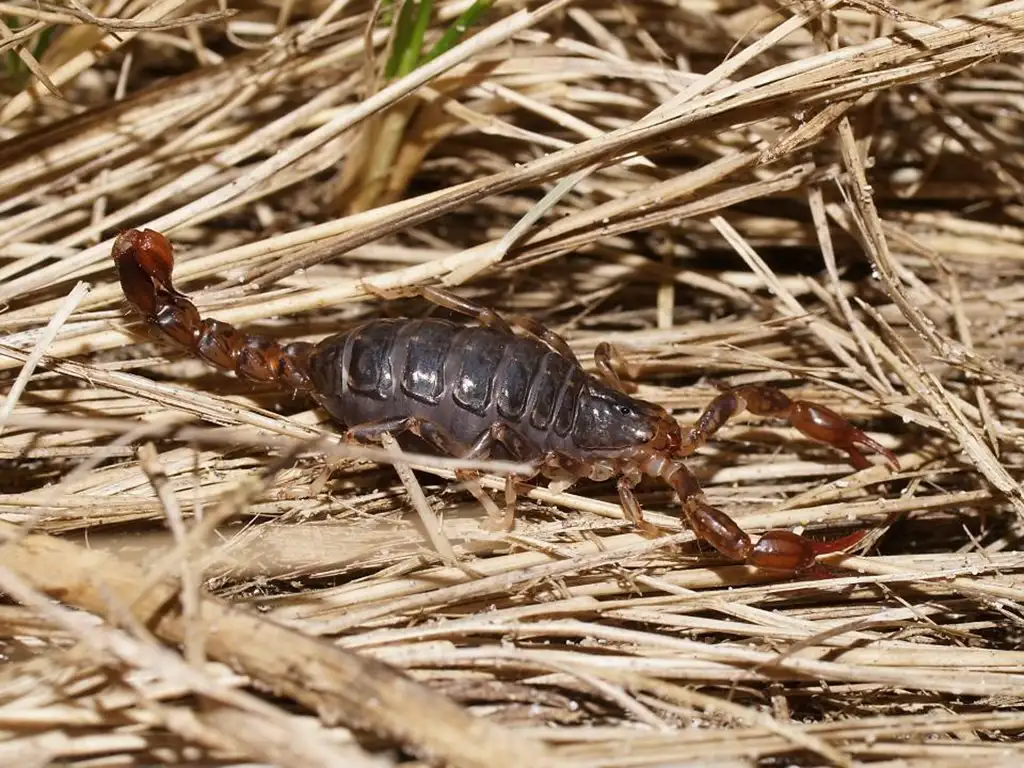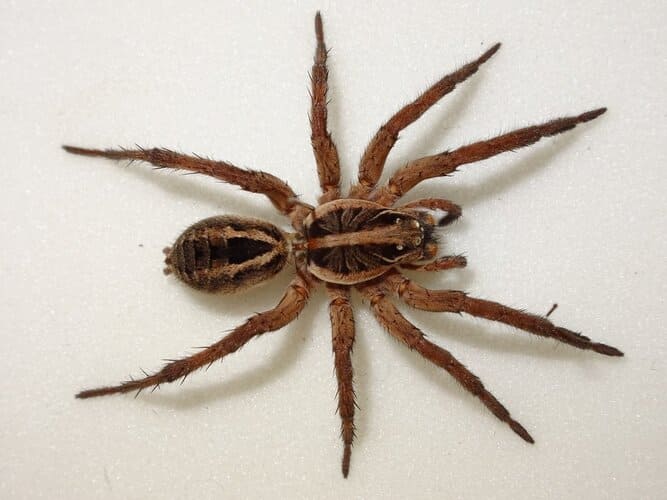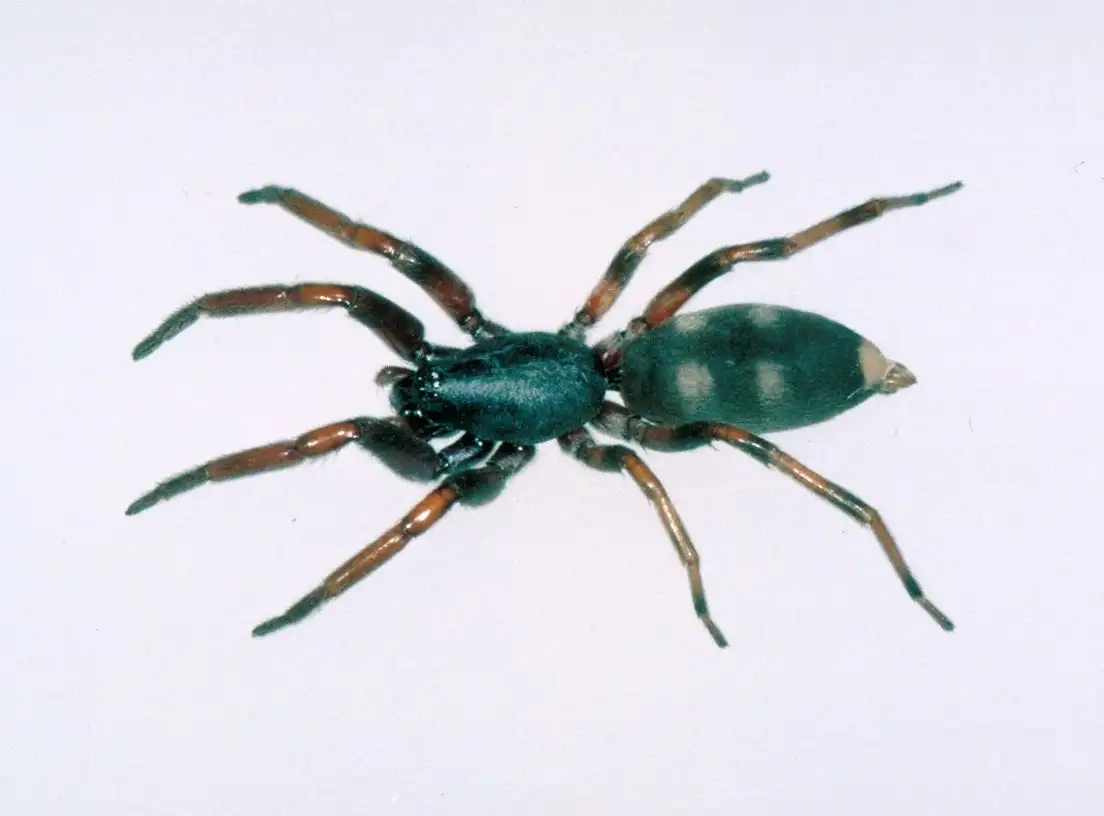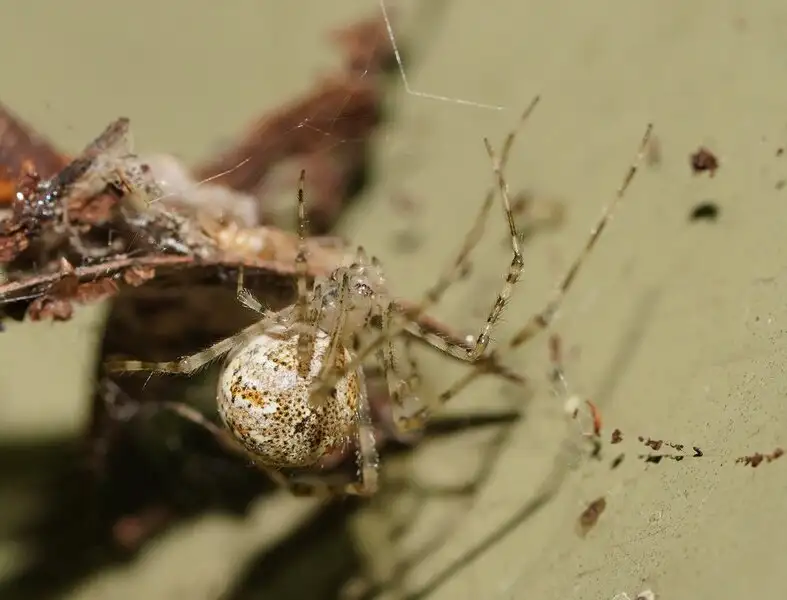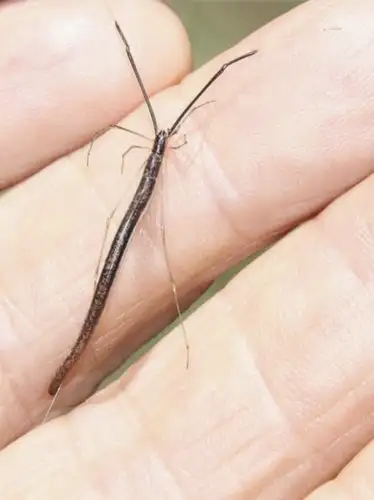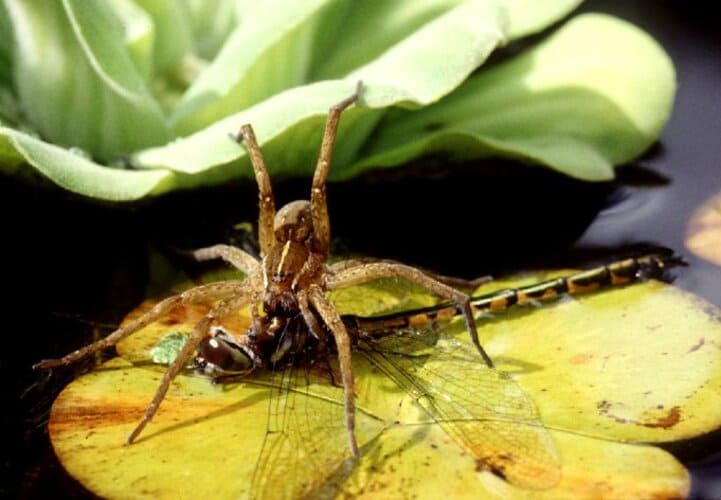spider
IUCN
LCBasic Information
Scientific classification
- name:spider
- Scientific Name:Webworms, flat spiders, garden spiders, octopuses, crickets, silkworms
- Outline:Arthropoda
- Family:Araneae Arachnida Arthropoda
Vital signs
- length:0.05mm to 60mm
- Weight:1 mg - 230 g
- lifetime:8 months - 20 years
Feature
Body structure: The spider's body is divided into the cephalothorax and abdomen, and the two parts are connected by a slender abdominal stalk. There is a pair of chelicerae in front of the head, and the end of the chelicerae is a venomous fang with a venom gland duct. The number of eyes of spiders varies, including single eye, eight eyes, six eyes or four eyes.
Leg characteristics: Spiders have four pairs of legs on both sides of the thorax, and hard claws grow on the toes for walking and climbing.
Life habits: The lifestyle of spiders can be divided into nomadic and settled types. Nomadic spiders hunt and prey everywhere, have no fixed place to live, and do not make webs. Settled spiders make webs, dig holes or build nests as fixed residences.
Diet: Spiders have a mixed diet, mainly feeding on insects such as flies. They have strong predation ability and are natural enemies of many agricultural and forestry pests.
Reproduction and life span: Spiders can
Distribution and Habitat
Found throughout the world, from tropical to Arctic regions, they live in eaves, corners, and trees, or underwater in air-filled silk homes and on mountaintops.
Appearance
Body structure: The spider's body is divided into the cephalothorax and abdomen, which are connected by a slender abdominal stalk. There is a pair of chelicerae in front of the head, and the end of the chelicerae is a fang with a venom gland duct. The number of eyes of spiders varies, including single eye, eight eyes, six eyes or four eyes.
Leg features: Spiders have four pairs of legs on both sides of the thorax, with hard claws on the toes for walking and climbing.
Details
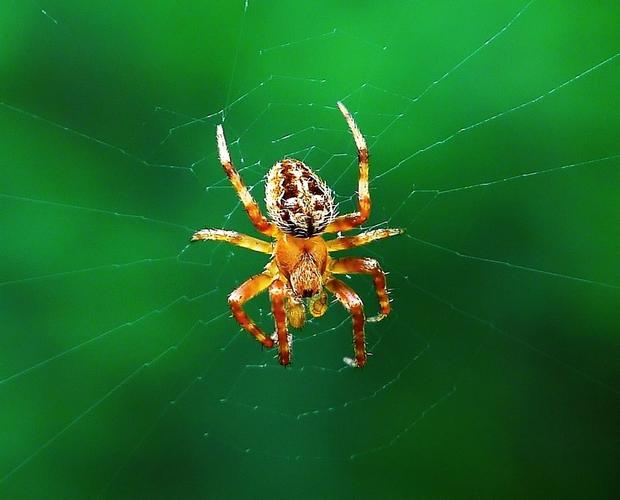
Spiders (scientific name Araneida; Araneae, foreign name Spider) are also known as webworms, flat spiders, garden spiders, eight-legged spiders, Xizi, and Bosi. It is an arthropod of the chelicerae subphylum. It has two body segments. The body of the eight-legged spider is divided into the cephalothorax and abdomen, and the two parts are connected by a slender abdominal stalk; there is a pair of chelicerae in front of the head, and the end of the chelicerae is a venomous fang with a venom gland duct; there are also four pairs of legs on both sides of the chest, with hard claws on the toes; spiders have single eyes, and there are spiders with eight eyes, six eyes and four eyes, but no chewing organs. Wang Anshi's "Zi Shuo" records: set up a one-sided web, and then kill the object when it touches it, so it is called "spider". In ancient times, it was also called "Toad" (pronounced the same as "Poison"), "Second" (pronounced the same as "秋"), and in some areas of Sichuan and Chongqing, it was called "worm", and in Cantonese, it was called "Cicada". As of June 2023, there are 132 families, 4325 genera, and 51164 species. The order Araneae is the most numerous order in the class Arachnida. The study of spiders is called Arachnology.
Structure
1. Pads
2. Cephalothorax
3. Abdomen
4. Legs
5. Ocellated eyes (6 or 8)
Toxicity: All spiders, except for three groups of spiders in the suborders Theridiidae, Holarchaeidae, and Mesorhynchidae, totaling about 350 species, can inject venom to protect themselves or kill prey. However, only about 200 species bite humans and may pose a health problem to humans. Many larger species may have some effects from the bite, but usually no lasting health problems. A few species of spiders, such as the black widow spider, the large rando spider, and the birch yellow spider, can be fatal if they bite humans.
Digestion
1. Book lungs
2. Spinnerets; spinnerets
3. Genital plates
4. Tracheal spiracles
In spiders, the segments of arthropods are generally combined into two body segments, the cephalothorax and the abdomen, connected by a small cylindrical fleshy stalk. Like all arthropods, they have a small body cavity, the main one being the hemocoel, through which the hemolymph delivers oxygen and nutrients to the tissues and removes waste. Their digestive system is too narrow for spiders to eat large solids. Instead, they liquefy their food by filling it with digestive enzymes and grinding it with appendages near their mouths.
Movement: With the exception of the most primitive Mesothelidae, all spiders have the most centralized nervous system of all arthropods - they are all combined. Unlike most arthropods, spiders do not have extensor muscles in their legs, but rely on hydraulic pressure to extend their legs.
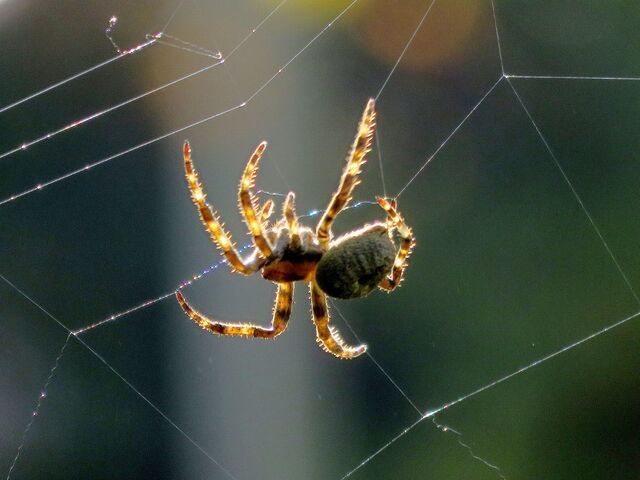
Spider Silk: They have appendages called silk sacs in their abdomens, which can extrude up to six types of silk from glands in their abdomens. The silk is secreted by the cells of the silk glands. It is a viscous liquid in the gland cavity. After being discharged through the spinning tube, it quickly condenses into silk when it encounters air. The specific gravity of the silk is 1.28, and it is strong and elastic. . The lightness, strength and elasticity of spider silk far exceed those of artificial materials, and the genes of spider silk have been embedded in mammals and plants to see if they can be used as factories to produce silk.
The cave spiders stay in the web during the day and guard the cave entrance at night, waiting for opportunities to hunt or go out for food. The male spiders dig a shallow pit under the soil, the burrowing wolf spiders dig a vertical deep hole underground, and the dancing spiders also weave a cover at the entrance of the cave. This cover is made up of multiple layers of silk. The cave of the giant spider is 1 meter deep. The spider is small and highly toxic. Once it bites the rabbit, it will die in four minutes.
When the young spiders start to build webs, if the silk cannot be attached to any object, and there happens to be an updraft, they will take off and fly in the air with the wind. Therodiidae, Lycosauridae, Theridiidae, Salticidae, etc. all have the ability to "fly". (Spider flight: If a spider called a balloon is interested in balloons made by humans, it will also despise artificial balloons. On a windless and sunny summer day, this spider will weave a silk thread that stretches straight into the air under the warmth of the sun. Like a soaring bird, it first finds a place with updrafts. I don't know whether the spider spins silk first and then uses the surrounding hot molecules to create an updraft, but in any case, the silk thread rises and rises until the spider knows that it can hold its body up, then it lets go and soars for miles in the air with the wind for a few hours. Its bulky body is lifted and supported by a silk thread that weighs less than one percent of its weight. The standardized conditions at this moment are the result of all the incredible fine-tuning, including adjustments to sunlight, wind, length, and length of the woven silk thread) to avoid killing each other and evacuate excessive density, which is very effective.
The strength of spider silk is equivalent to 5 times that of steel wire of the same volume. After the spider has woven a web, it lies in the center of the web, "waiting for the rabbit by the tree" - waiting for the flying insect to fall into the trap.
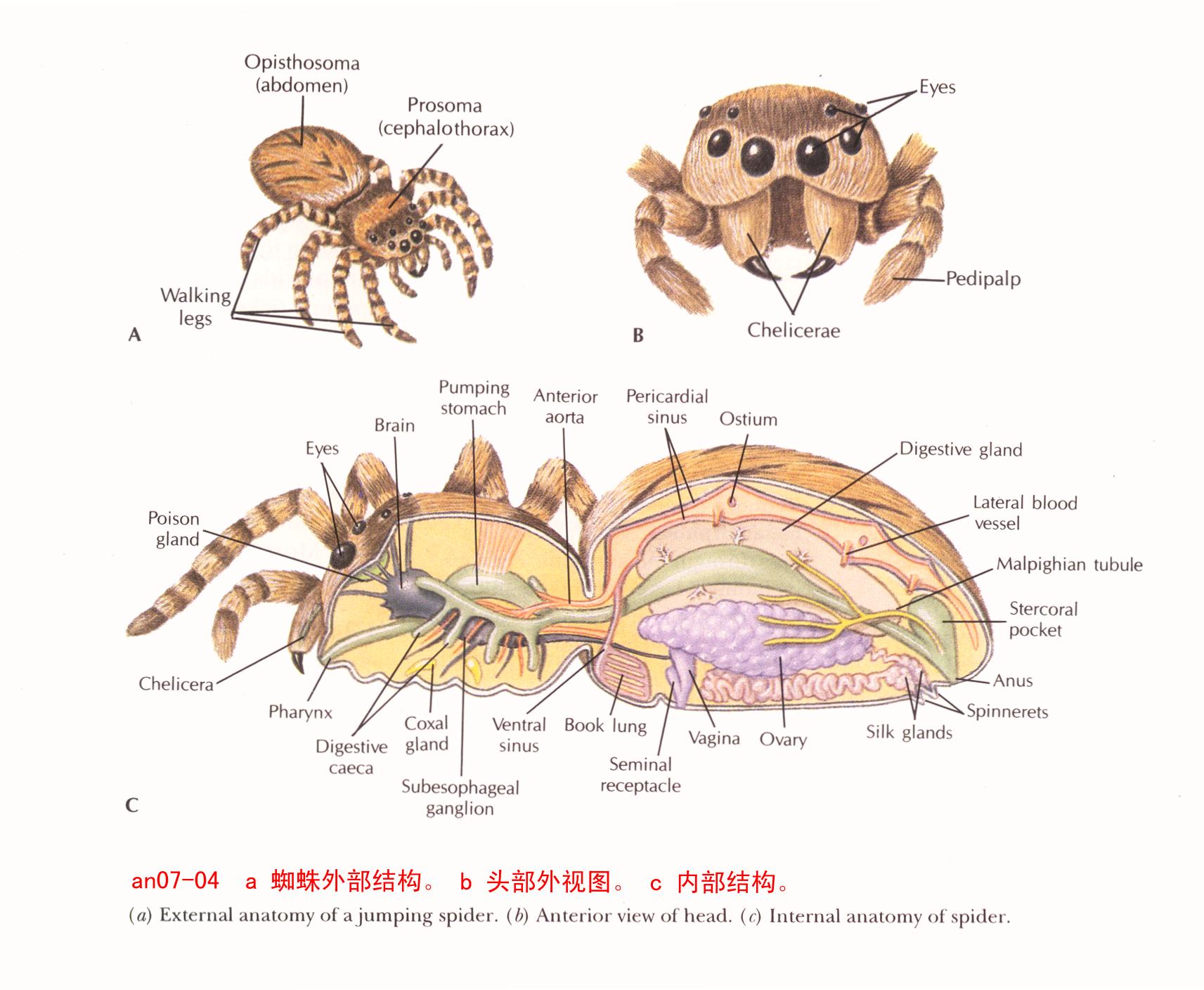
Anatomy: Spiders, unlike insects, have only two body segments (tagmata) instead of three, namely the fusion of the head and thorax (called the cephalothorax or anterior body) and the abdomen (called the posterior body). The exception to this rule is the assassin spider, whose cephalothorax is almost divided into two independent units. Except for a few very primitive spider species (theridiidae), the abdomen is not divided externally. The abdomen and cephalothorax are connected by a thin waist, called a pedicle, pedicle or pregenital somite, which allows the spider's abdomen to move in any direction. This waist is actually the last segment (somite) of the cephalothorax, which is lost in most other members of the arachnids (scorpions can only detect it in the embryo).
Spiders have two short pedipalps next to their mouthparts, which are significantly shorter than the walking legs and are equivalent to the antennae of insects. They have the functions of touch, smell and hearing. The ends of the pedipalps of male spiders are formed into gloves, which can transfer sperm during mating. Hunting female spiders use pedipalps to carry egg sacs.
Predation: With the exception of Bagheera kiplingi, which is mainly an omnivorous spider that is herbivorous, most other known spiders are carnivorous predators, mostly preying on insects and other spiders, but some larger species also catch birds, lizards and snakes. However, many spider larvae feed on nectar, and there is statistical evidence that even adults feed on pollen.
Spiders have modified stygids that are often used to inject venom into their prey. Because relatively few species have venom that is dangerous to humans, scientists are now studying spider venom for medical uses and as an insecticide.

Spiders use sticky webs as traps to capture, ambush, or chase prey. Species that use webs or ambush tactics are extremely sensitive to vibrations in the air, ground, and silk threads as a warning line, while active predators have vision that is up to ten times more accurate than that of a dragonfly. Some active predators use different tactics for different prey and show signs of intelligence—they try a variety of tactics for difficult prey and quickly learn which tactics to use for unfamiliar prey. Other species have modified body shapes and behavior patterns that allow them to mimic ants when hunting. Spider webs come in many different sizes, shapes, and amounts of sticky silk. It now appears that the spiral ball web may have been one of the earliest shapes. Although orb-web spiders are the best known and most extensively studied, they are a minority of all spider species. Spiders that make other types of webs are more numerous, probably because their tangled webs are a formidable threat to predatory wasps.
After the spider has woven its web, it sits in the center of the web, waiting for a flying insect to fall into its trap. A small leaf, a thin dead stalk, falls onto the web, and the spider trembles and then becomes still; however, a careless flying insect hits the web, and the spider "excites" to crawl over, sprays sticky silk to tie up the prey, anesthetizes it with its fangs, and sucks it in big mouthfuls after the prey tissue turns into liquid. How does the spider know when a tasty treat is coming? It has vibration receptors in the shape of slits on its legs. When the dry leaves hit the web, they stop moving, so the spider just vibrates for a moment when it hits the web. If it is a flying insect that hits the web, it will definitely struggle, which will send a vibration signal to the spider. Strangely, the spider reacts very differently to the same flying insect: if it is a fly, it will immediately run over to tie it up; if it is a bee, the spider will stay put. Is the spider afraid of bee stings? No. Scientists have found that spiders are most sensitive to vibrations with a frequency of 40 to 500 Hz. The frequency of the flapping wings of flies is just within this range, while the frequency of the flapping wings of bees is more than 1,000 times per second, so it will not attract the attention of spiders. People have found that spider webs are very important to the lives of spiders. Spider webs are not only traps and restaurants for these animals to catch prey, but also their communication lines, walkways, marriage beds and nurseries. Why don't spiders get stuck in the sticky silk when they go back and forth on the spider web? Usually spiders use dry silk as a runway. When they need to walk on sticky silk, their eight legs will secrete an oil as a lubricant, so that they can move freely on the web. Reproduction: Before mating, the male spider weaves a sperm web, releases a drop of sperm-containing liquid from the reproductive hole into the sperm web, and then absorbs the sperm
Inside the pedipalp. Some have courtship actions during mating, such as wolf spiders and jumping spiders waving their pedipalps. The male European robber spiders will present flies wrapped in silk to the females and mate with them when the female spiders are feeding; when they can't find flies, they will use small stones instead. Most male spiders use their left pedipalps to insert the left opening on the female spider's reproductive plate during mating, and their right pedipalps to insert the right opening. After the sperm enters the reproductive plate, it moves into the spermatheca that is connected to the oviduct, and the eggs are fertilized during the process of passing through the oviduct to the reproductive opening. Some male spiders refill the copulatory apparatus with semen after mating and mate with the same female spider again. After mating, some species of male spiders apply a secretion (genital plug) on the female spider's reproductive plate to prevent the female spider from mating again. Some male spiders are eaten by female spiders after mating, but this is not common. Black widow male spiders die a few days after mating, and are occasionally preyed on by female spiders because they are too weak after mating.
The male spider's pedipalps (the appendages next to the fangs) are modified to act as syringes for injecting the genitals. To avoid being eaten before mating, male spiders use a variety of complex courtship rituals to show their status. Most species' males survive only a few matings, mainly due to their short lifespan, and in a few species, males can live in their mate's web for a period of time. However, some species' males will pin themselves to the female's fangs during mating. Like other male spiders, they do not eat or drink after maturity and can only survive on previously stored energy, which is not suitable for long-distance travel. The skinny male redback spider is quite impressive in his web, but once away from the safe haven, even ants are no match for him. This may be to ensure that his mate is well-nourished, thereby increasing the number of possible offspring. When the male redback spider inserts his sperm organ into the female spider, he will stand upside down with his forelimbs as a fulcrum, and let his body hang by the female's mouth. As it injects semen, the female spider, which is 200 times larger than its body, begins to chew its tail. What's even more amazing is that the male spider has a chance to escape. It has two mating organs, and after one of them is finished, it can escape from the tiger's mouth and save its life. But within 20 minutes, the male spider usually returns to the female spider's web for a second mating. This time, the female spider will no longer show mercy. A male spider that mates with a female spider twice delivers more than 1,000 sperms than a male spider that only mates once. It turns out that for these more than 1,000 sperms, for the continuation of the entire race.
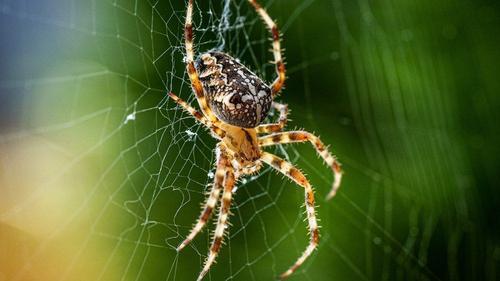
Some female spiders only mate once, while others can mate with multiple males in succession. After mating, the female spider lays an egg sac with several to a thousand eggs, or lays several egg sacs, each containing fewer eggs than the last. Some species die after laying the last egg sac or taking care of the young spiders. Such female spiders generally live for 1 to 2 years. The lifespan of the straight chelicerae is 20 years.
Some primitive species have egg bags made of several layers of silk, spherical or disc-shaped, attached to rocks, and some female spiders guard the egg bags. Wolf spiders carry the egg bags with them on their chelicerae or spindles. After hatching, the young wolf spiders climb onto the back of the mother spider and leave after about 10 days. Some spider mothers take their young spiders to bask in the sun, and some female spiders feed their young spiders. There is a spider in Europe where the mother spider dies when the young spiders start to feed and becomes food for the young spiders. The young spiders are similar to adult spiders and mature after molting several times. Female spiders molt 6 to 12 times, and male spiders 2 to 8 times. Some have molted 1 to 2 times before hatching. Orthoptera take 3 to 4 years to mature. Most of them overwinter as juvenile spiders. Development and molting are controlled by hormones. Many young spiders can climb to the tip of leaves or treetops, lift their abdomens, and release a few strands of silk to be spread by wind to other places.
The female spider spins silk to form an egg bag, which contains fertilized eggs. The egg bag is attached to the web (web spider), or laid under stones or on leaves. Some mother spiders guard the egg bag, while others carry it with them. The young spiders that have hatched from the egg shells remain in the egg bag for several days and shed their skin 1 to 2 times in the bag. The young spiders shed their skin 4 to 10 times before they mature. Spider silk plays an important role in the life of spiders. Web-making is an instinct of many spiders. There are many types of webs, and the methods of making webs are also different. Many spiders, especially young spiders, can use silk to fly.
Spiders lay eggs, and the eggs are generally wrapped in silk egg bags. The female body protects and carries the egg bag in different ways, such as placing it on the web, under stones, on branches, or holding the egg bag in its mouth, holding the egg bag in its chest, etc. It is an incomplete metamorphosis. During the embryonic period, the abdomen is still segmented, and it lives by making webs or not. There are round webs, dish webs, funnel webs, triangular webs, irregular webs, etc.
Spiders are not only different in shape and size, with males smaller than females, but also have different colors. For example, males of the Salticidae family have bright colors, while females have dark colors. Males of the Cancer Theridiidae family have red markings on their backs, while females are all green.
Male spiders mature earlier than female spiders, and male spiders appear for a shorter time. Most of the spiders collected are females. Spiders have a unique way of mating. For example, after mating, if the male is not killed by the female spider and can escape, he can mate again.
Before laying eggs, female spiders first use silk to make a "bed". Lay eggs on it, and then cover it with silk. And weave the egg sac into a fixed form. A female spider usually only lays one egg sac, but there are also some that lay multiple egg sacs, such as the garden spider lays 5 to 6, and the red-spotted poisonous spider lays 13. The number of eggs laid by a female spider can range from a few to hundreds, such as the red-spotted poisonous spider can lay 60 to 720, and some species of the garden spider family can lay 1,000.
Female spiders weave egg bags with silk, each of which can hold hundreds of eggs; the spiderlings that hatch from the egg shells remain in the egg bags and will not leave the egg bags until they molt once. Wolf spiders are called nanny spiders because they not only carry egg bags with them when they hunt, but also carry their young spiders with them after they hatch. Some female spiders die immediately after weaving the egg bags, some continue to live for a period of time after the young spiders leave the egg bags, and some are bitten to death by their own young spiders for food. These spiders will then hatch into similarly smaller adults, but most of them cannot eat until they molt for the first time. Female individuals of many species will take care of their young, such as carrying them on their backs or sharing food with them.
Before reaching maturity, spiders must molt several times as they grow. The number of molts and the intervals between molts vary widely. Generally speaking, small spiders molt 4 to 5 times in their lifetime; medium-sized spiders molt about 7 to 8 times; large spiders molt about 11 to 13 times, such as the male spider of the red-spotted poisonous spider molts 5 times and the female spider 7 times.
A few species are social and build shared spider webs, which may have a few to 50,000 spiders living in them. Social behavior ranges from mutual tolerance of unstable dangers - such as aggressive widow spiders, to cooperative hunting and sharing of food. Spiders are long-lived. Most spiders complete a life cycle, generally 8 months to 2 years. Male spiders are short-lived and die shortly after mating. Others, such as water spiders and cunning spiders, can live for 18 months, burrowing wolf spiders can live for 2 years, giant crab spiders can live for more than 2 years, and theropods and other protoceras can live up to 20 to 30 years in captivity.
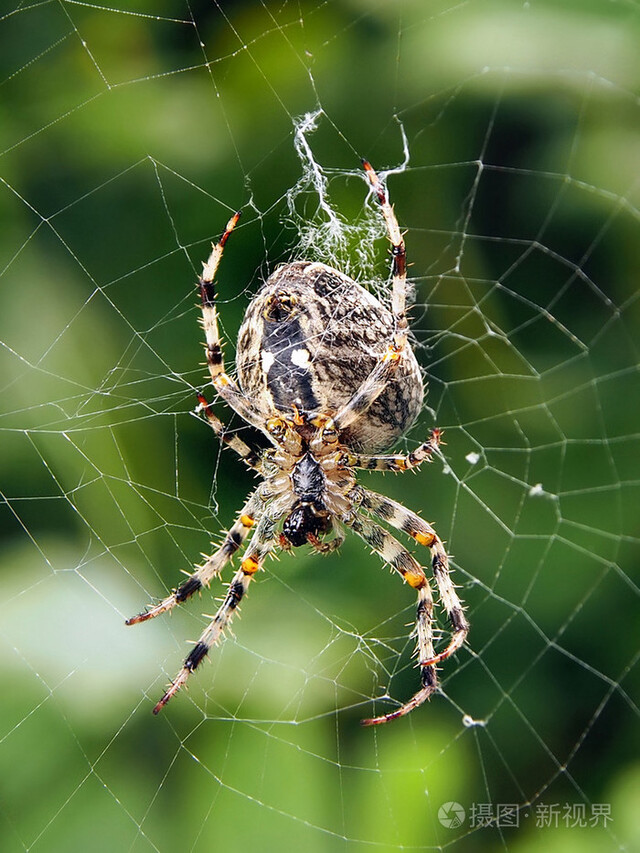
Morphological characteristics
The body length of different types of spiders ranges from 0.05 mm to 60 mm. The body is divided into the cephalothorax and abdomen. Some species have a thorax on the back of the cephalothorax (some do not), and there are usually 8 simple eyes on the front of the cephalothorax (there are also six, four, two, or zero), arranged in two to four rows. There is a large thoracic plate on the ventral side, and there is a lower lip between the two frontal lobes in front of the thoracic plate. The abdomen is not segmented, and the abdominal stalk evolved from the first abdominal segment (the seventh body segment). The abdomen is mostly round or oval, and some have various protrusions and strange shapes. The ventral spinneret on the abdomen evolved from the appendages. A few primitive species have 8, which are slightly forward; most species have 6 spinnerets, located in front of the anus at the rear end of the body; and some species have 4 spinnerets, with many spinning tubes on the spinneret, which are connected to various silk glands, and the silk is spun by the spinning tubes. The sensory organs include eyes, various sensory hairs, auditory hairs, lyre-shaped organs, and tarsal organs.
The spider is covered with a chitinous exoskeleton, and its body is clearly divided into the cephalothorax and abdomen. The two are often connected by a thin stalk formed from the first abdominal segment of the abdomen. There is no tail segment or tail whip. Spiders have no compound eyes, and the cephalothorax has 6 pairs of appendages. The first and second pairs belong to the head appendages. The first pair of chelicerae are mostly 2 segments, with the swollen part at the base being the chelicerae, and the pointed part at the end being the chelicerae. The teeth are tubular, and there are poison glands in the chelicerae or the cephalothorax, from which the venom secreted is derived. The second pair of appendages are called palps, which are shaped like walking legs, but only have 6 segments. The base segment forms a jaw-like protrusion near the mouth to help feed. The last segment of the female spider's palps does not change much, while the last segment of the male spider's palps is specialized as a reproductive auxiliary organ with a sperm storage and sperm transmission structure, called a pedipalp. The third to sixth pairs of appendages are walking legs, which are composed of 7 segments, with claws at the end and a bunch of hard hairs under the claws, so they are suitable for crawling on smooth objects. Spiders are arthropods. There is a pair of chelicerae in front of the head, with fangs at the end of the chelicerae and venom gland ducts; there are four pairs of legs on both sides of the chest, with hard claws on the toes; spiders have single eyes, and there are spiders with eight eyes, six eyes and four eyes.
The mouthparts of spiders are composed of chelicerae, mandibles of pedipalp stem segments, upper lip and lower lip, which have the functions of poisoning, catching, crushing food and sucking juice.
Some spiders have tufts of sticky hair under the claws of the tarsus, which enable spiders to crawl on vertical smooth objects. Spiders that weave webs have several claw-like spines near the top of the tarsus, called accessory claws.
The abdomen of most spiders is not segmented. The presence or absence of external female organs (called reproductive operculum) is an important feature for identifying female species. There are special spinning organs in the middle or at the rear end of the ventral surface of the abdomen. The three pairs of spinning organs are called the anterior, middle and posterior spinning organs according to their attachment positions. There is a membranous spinning tube at the top of the spinning organ, which is surrounded by hairs. Different spiders have different numbers of spinning tubes. Different shapes of spinning tubes spin different spider silks. The sieve apparatus of the spinning tube is also a spinning organ. For example, the thread-marked hooded spider of the family Theridiidae has 9,600 spinning tubes on its sieve apparatus, which shows that the silk it spins is extremely fine. There are 8 kinds of silk glands that are led out of the body through the spinning tube. The size and number of the silk glands increase as the spider grows and molts. Spider silk is a bone protein that is very sticky, tough and elastic. After being spit out, it will be absorbed by the air.
It becomes hard with anger.
The male body is dioecious, the male body is smaller than the female body, the tarsus of the male body's tentacles develop into the tentacles, and the female body has external female organs after the last molt.
There are 3 pairs of legs, which are divided into basal joint, trochanter, leg joint, knee joint, tibia joint, hind tarsal joint, tarsal joint and tarsal terminal joint (with claws on top). The legs are covered with setae and have several sensory organs, such as slender hairs (which sense airflow and vibrations). After the legs are self-cut, they can regenerate during the next molt. 8 or less per eye. Certain pedal and palatine muscles attach to the intrasternal bones of the head and chest. The cephalothorax and abdomen are connected by a slender ventral stalk. Due to the presence of the abdominal stalk, the abdomen can swing freely when the spinner is spinning. The nervous system is completely concentrated in the cephalothorax, with the brain above the pharynx (suprapharyngeal ganglion) and the subesophageal ganglion. Cracked sensory organs are scattered around the body or near the foot joints and are used to control vibration or hearing.
The abdomen is unsegmented and contains the digestive system, heart, reproductive organs and silk glands. When eating, the digestive juices are spit out for external digestion, and then the liquefied food is inhaled. They have both book lungs and trachea, but straight palatine suborders only have book lungs, and synpalatine suborders only have tracheas. All spiders except for the family Aphids have venom glands, which are located inside the chelicerae or under the carapace. The venom gland duct passes through the opening of the chelicerae near the end of the chelicerae. The venom gland may originate from an auxiliary digestive gland. The venom gland secretions of many species of spiders are full of digestive enzymes, and the secretions of some species can subdue prey and even fight predators (including vertebrates).
Habitat distribution
Spiders are found all over the world, from the tropics to the Arctic. They inhabit eaves, wall corners, and trees, live underwater in air-filled silk homes, and live on mountaintops. Spider-like arachnids with silk-producing plugs appeared during the Devonian Period (386 million years ago), but these animals notably lacked silk sacs. True spiders have been found in Carboniferous stones, from 318 to 299 million years ago, and are very similar to a primitive group of mesotheranids that still exist. The main modern spider species, the Proterocarinae and Neotheranae, first appeared during the Triassic period 200 million years ago. Dating more than 130 million years ago, fossilized amber preserves details of spider anatomy and behavior, including mating, hunting prey, producing spider silk and possibly caring for their young. In some rare cases, amber has preserved spider egg sacs and webs, and occasionally prey.
Spiders are found all over the world, from the tropics to the Arctic, and live underwater in air-filled silken dwellings and on mountaintops. In 1973, Skylab 3 took two spiders into space and found that they could weave webs similar to those on Earth in zero gravity.
habits
Spiders have a mixed diet, mainly feeding on flies and other insects, other spiders, and myriapods. Some spiders will also feed on small animals and are resistant to hunger. Jumping spiders have excellent eyesight and can sneak up to capture prey within 30 centimeters and pounce on it. Crab spiders wait for prey on flowers of a similar color to themselves. Ground spiders that burrow in the soil build burrows lined with silk. The entrance of the burrow has a retractable cover that is opened at night to prey on insects that pass through the burrow. Funnel spiders weave funnel webs, which cause vibrations when insects fall into the web; the spider itself lives in a silk tube with a narrow end that leads into vegetation or stone crevices.
Most orb spiders use the least amount of silk to weave the largest area of the web. The web is like an air filter, trapping insects with no visible filaments and weak flying ability. Although the net is complex, it can usually be woven within an hour, and is often completed before dawn. If the net is destroyed while hunting, a new net is woven. As it spins its orb web, the spider releases a strand of it that floats in the wind. If the free end of the silk fails to stick to something, the spider pulls the silk back and eats it. If the silk is firmly attached to something (such as a branch), the spider passes over the silk bridge and reinforces it with silk. The spider fixes a thread in the center of the bridge, hangs itself on the thread, and hangs down to the ground or another branch, where it sticks to the thread. The spider returns to the center and pulls out radiating threads that radiate from the center of the web. The spider then crawls back to the center of the web and uses dry silk to pull out temporary spiral threads from the inside out, with large gaps between each turn. Then the spider crawls to the outermost periphery and installs sticky, tight insect-catching spiral threads from the outside to the center of the web. While knotting, eat the previously knotted dry spiral thread that is not sticky. After the web is completely completed, some spiders pull a thread (signal thread) from the center of the web and crawl into the leaves at a corner of the web to hide.
They can be roughly divided into two types based on their way of life and hunting: web-building spiders and hunting spiders.
web-spinning spider
Some web-building spiders build webs, some dig burrows, and some build nests. As a fixed residence, the most important feature is its web-building behavior. Those who live independently keep a certain distance between individuals and do not invade each other. Spiders secrete mucus through the protrusions at the tip of their silk sacs, and this mucus condenses into very thin silk when exposed to air. The web made of silk is highly sticky and is the spider's main means of preying. For insects that stick to the web, the spider first injects a special liquid digestive enzyme into the prey. This digestive enzyme can make insects comatose, convulse, and die, and liquefy their bodies. After liquefaction, the spider eats by sucking. Spiders lay eggs, and most male spiders will be eaten by the female spider after mating and become food for the female spider.
hunting spider
Nomadic spiders are spiders that hunt everywhere, hunt for food, live in no fixed place, and do not build webs, dig holes, or build nests at all, including the family Lepidaceae, Ursidae, and most Lycosidae, etc., which can be found everywhere. They wander or camouflage on the spot to hunt prey, such as the white-fronted tall-footed spider, commonly known as the Lagoon in Taiwan (the word used by the Ministry of Education: centipede), which feeds on cockroaches. There are also small and medium-sized crab spiders that do not build webs. They imitate the colors of petals and stamens and prey on insects when they approach. The same goes for fly tigers and jumping spiders. Jumping spiders have very well-developed eyesight and generally detect prey through their eyesight and use various methods to hunt for it. The vision of wolf spiders is second only to that of jumping spiders. Wolf spiders are basically distributed in various countries. There are burrowing wolf spiders that dig holes and wait for prey; there are also hunting wolf spiders that generally run around and catch prey like wolves when they find it; tarantulas It is a large spider that can build webs. Nowadays, many species in the Tarantula family are kept in captivity as pets. For example: Chilean red rose spider, Honduras curly spider, sapphire gorgeous rainforest.
Spiders have a mixed diet, mainly feeding on flies and other insects. They are resistant to hunger and hunger, have strong fecundity and have a long lifespan. Small hunting spiders are very fast and agile, so their joints are more developed than web-weaving spiders. Some spiders can secure themselves with webs to protect themselves and float with the wind to other places to hunt for food.
Value: Spiders are not food on the table for humans, and they are even feared and kept away from them. However, in some areas such as Sukhumvit in Cambodia, spiders are sold as dishes.
The natural enemies of many agricultural and forestry pests play an important role in biological control. The protection and utilization of spiders has become an important part of biological control. The medicinal and economic value of spiders is extremely high. Spiders are a traditional Chinese medicinal material. The oral liquid produced from spiders has a significant effect on neurological diseases. Spiders are used as medicine to detoxify and reduce swelling. They are mainly used to treat boils, sores, insect bites, infantile convulsions, impotence and premature ejaculation, cerebral hemorrhage, epilepsy, Alzheimer's disease, cerebral arteriosclerosis and other diseases. They are also effective in treating many diseases. Patent medicine has good curative effect on some difficult diseases.
Spider silk is a kind of silk protein that is tough and elastic. It can be used to make artificial blood vessels and artificial tendons. It is 5 to 6 times stronger than steel and can be used to make body armor. Spider silk has also been used as a crosshair in the sniper scope tube of a sniper rifle; however, the cost of using spider silk to make a crosshair is too high for arms dealers in various countries. Therefore, with the emergence of cheaper man-made fibers After that, spider silk was gradually replaced by it.
artificial breeding
There are many types of spiders with diverse feeding habits. Insects such as locusts, crickets, butterflies, flies, and mealworms are the best food for spiders. If the breeding of spiders is to be developed in depth, scaled up, and comprehensively processed, it would be best to set up a small insect farm and raise flies in cages or mealworms in boxes to meet the spider feed supply. It is not easy to develop effective human feed. Here we introduce an artificial feed suitable for raising red claw spiders and wolf spiders. Crab spiders were raised with a mixed feed of 4 parts egg yolk and 1 part miscellaneous ingredients for 6 weeks. No findings were found. adverse effects. Spiders like to prey on fresh meat and have a great control effect on flies and mosquitoes in the home.
Spiders have a strong sense of territory and should be kept alone. They only eat one or two meals a month and can go on hunger strike for up to two months. The food is mainly crickets, grasshoppers and other insects. You only need to put a wet sponge in the cage to add moisture, and you can raise it to adulthood (about seven years) without changing the cage.
Not all spiders are venomous (spiders from the family Araneidae are not)! And the toxicity is different. Generally, the pet hairy spiders on the market are relatively weak in toxicity and will not actively attack people unless they are deliberately teased. Even if bitten, it is not life-threatening. It is very adaptable and does not require meticulous care. Spiders are the easiest pets to keep.
Because spiders are ferocious in nature, are all carnivorous, and have the habit of killing each other, it is easier to successfully raise them alone, but more difficult to raise them in groups. And because spiders have a variety of eating habits, are resistant to hunger, and have strong vitality, as long as the three basic conditions of food, water and cover are ensured, success can be achieved. Raised and observed in a gas lampshade, it was found that a wolf spider with a body length of about 1 cm preyed on 7 to 12 planthoppers, leafhoppers, and flies every day. The pseudo-ringed wolf spider can withstand hunger for 34 to 112 days without water supply.
The amount is related to the amount of food. Generally, the higher the temperature, the worse the starvation resistance.
Single breeding
Hunting spiders: Since they do not make webs, the breeding containers used can be smaller, such as glass bottles, tubes, lampshades, and culture dishes.
Single spider breeding in a mosquito-catching glass tube, the mouth of the tube is a cork with a small glass tube, and the lower end of the small glass tube is plugged with a small cotton ball. Clean water can be injected through the top of the small glass tube, or 10% honey solution (for raising young spiders) can be injected to provide water. The other end of the mosquito-catching glass tube is a round bottom that protrudes into the tube. There is a small hole in the center of the bottom, which is plugged with cotton to prevent the spider from escaping. This hole can also be used to put in live insects such as lice, leafhoppers, aphids, flies, or artificial feeds such as egg yolks to provide food sources.
Lampshade breeding: suitable for medium-sized spiders that do not make webs. The top of the lampshade is tied with gauze, and a small hole is opened in the gauze. Install a glass tube for water and food. The lampshade is placed on a white porcelain basin that is larger than the lampshade. Fertilizer soil can be spread in the basin, and plants suitable for the living conditions of the spider can be planted. Adult spiders and young spiders can be raised.
Wooden box breeding: suitable for web-building spiders, such as garden spiders and octopus spiders. The height of the wooden box should be about 1 meter. The wooden board only needs to be smooth on the outside, and the inside can be rough to facilitate spider crawling. There is a valve at the bottom of each side of the box to facilitate operation inside the box. The top and four sides of the box are surrounded by nylon mesh to facilitate ventilation and light transmission. The box can be arranged to simulate natural living conditions, which is convenient for setting webs, roosting and hunting. A water culture dish can be placed (use cotton balls to store water without drowning the spider) and another dish containing artificial feed. [10]
Group breeding
A larger wooden box can be designed to increase the number of spider species and spiders. The layout of the box should simulate the natural ecological conditions of spiders. There is also a breeding box with iron window screen as the cage wall, which can be directly covered with straw, and a funnel-shaped insect collector is installed on the top of the cage. The insects are attracted by lights. The group breeding method is difficult to achieve the ideal effect and is still under exploration.
Classification
The families marked in bold in the table below contain one or more poisonous spiders.
Spider classification table | ||||
Suborder | Superfamily | division | Genus | kind |
Mesothelae | Liphistiidae | 8 | 116 | |
Mygalomorphae | Mecicobothrioidea | Mecicobothriidae | 4 | 9 |
Microstigmatidae | 7 | 15 | ||
Hexatheloidea | Hexathelidae | 11 | 86 | |
Atracidae | 3 | 35 | ||
Dipluroidea | Dipluridae | 24 | 177 | |
Nemesioidea | Nemesiidae | 41 | 342 | |
Theraphosoidea | Theraphosidae | 116 | 909 | |
Paratropididae | 4 | 8 | ||
Barycheloidea | Barychelidae | 44 | 300 | |
Atypoidea | Atypidae | 3 | 43 | |
Antrodiaetidae | 2 | 32 | ||
Cyrtauchenioidea | Cyrtaucheniidae | 18 | 134 | |
Idiopoidea | Idiopidae | 22 | 297 | |
Ctenizoidea | Ctenizidae | 3 | 52 | |
Halonoproctidae | 6 | 82 | ||
Migoidea | Migidae | 10 | 91 | |
Actinopodidae | 3 | 41 | ||
incertae sedis | Macrothelidae | 1 | 26 | |
Araneomorphae | Hypochiloidea | Hypochilidae | 2 | 11 |
Austrochiloidea | Austrochilidae | 3 | 9 | |
Gradungulidae | 7 | 16 | ||
Filistatoidea | Filistatidae | 17 | 110 | |
Scytodoidea | Drymusidae | 1 | 15 | |
Periegopidae | 1 | 3 | ||
Scytodidae | 5 | 220 | ||
Sicariidae | 2 | 121 | ||
Leptonetoidea | Leptonetidae | 15 | 199 | |
Ochyroceratidae | 14 | 169 | ||
Telemidae | 7 | 22 | ||
Pholcoidea | Diguetidae | 2 | 15 | |
Pholcidae | 80 | 959 | ||
Plectreuridae | 2 | 30 | ||
Caponioidea | Caponiidae | 11 | 70 | |
Tetrablemmidae | 29 | 126 | ||
Dysderoidea | Dysderidae | 24 | 492 | |
Oonopidae | 68 | 472 | ||
Orsolobidae | 28 | 177 | ||
Segestriidae | 3 | 106 | ||
Eresoidea | Eresidae | 10 | 102 | |
Hersiliidae | 11 | 145 | ||
Oecobiidae | 6 | 102 | ||
Archaeoidea | Archaeidae | 3 | 25 | |
Holarchaeidae | 1 | 2 | ||
Mecysmaucheniidae | 7 | 25 | ||
Micropholcommatidae | 8 | 33 | ||
Pararchaeidae | 7 | 34 | ||
Palpimanoidea | Huttoniidae | 1 | 1 | |
Palpimanidae | 15 | 127 | ||
Stenochilidae | 2 | 12 | ||
Mimetoidea | Malkaridae | 4 | 10 | |
Mimetidae | 12 | 152 | ||
Uloboroidea | Deinopidae | 4 | 57 | |
Uloboridae | 18 | 262 | ||
Araneoidea | Anapidae | 34 | 144 | |
Araneidae | 166 | 2840 | ||
Cyatholipidae | 23 | 58 | ||
Linyphiidae | 569 | 4320 | ||
Mysmenidae | 22 | 91 | ||
Nesticidae | 9 | 204 | ||
Pimoidae | 3 | 25 | ||
Symphytognathidae | 6 | 44 | ||
Synaphridae | 2 | 8 | ||
Synotaxidae | 13 | 68 | ||
Tetragnathidae | 52 | 955 | ||
Nephilidae | 4 | 75 | ||
Theridiidae | 87 | 2248 | ||
Theridiosomatidae | 12 | 75 | ||
Lycosoidea | Ctenidae | 39 | 458 | |
Lycosidae | 104 | 2304 | ||
Neolanidae | 1 | 3 | ||
Oxyopidae | 9 | 419 | ||
Pisauridae | 53 | 334 | ||
Psechridae | 2 | 24 | ||
Senoculidae | 1 | 31 | ||
Stiphidiidae | 13 | 94 | ||
Trechaleidae | 15 | 75 | ||
Zoridae | 13 | 73 | ||
Zorocratidae | 5 | 21 | ||
Zoropsidae | 12 | 76 | ||
Agelenoidea | Agelenidae | 39 | 503 | |
Amphinectidae | 35 | 184 | ||
Amaurobioidea | Amaurobiidae | 71 | 643 | |
Dictynoidea | Anyphaenidae | 56 | 508 | |
Cybaeidae | 12 | 153 | ||
Desidae | 38 | 182 | ||
Dictynidae | 48 | 562 | ||
Hahniidae | 26 | 235 | ||
Nicodamidae | 9 | 29 | ||
Sparassoidea | Sparassidae | 82 | 1009 | |
Selenopoidea | Selenopidae | 4 | 189 | |
Zodaroidea | Zodariidae | 72 | 828 | |
Tengelloidea | Tengellidae | 8 | 36 | |
incertae sedis | Chummidae | 1 | 2 | |
Clubionidae | 15 | 538 | ||
Cryptothelidae | 1 | 10 | ||
Cycloctenidae | 5 | 36 | ||
Homalonychidae | 1 | 3 | ||
Miturgidae | 26 | 351 | ||
Titanoecoidea | Phyxelididae | 12 | 54 | |
Titanoecidae | 5 | 46 | ||
Gnaphosoidea | Ammoxenidae | 4 | 18 | |
Cithaeronidae | 2 | 6 | ||
Gallieniellidae | 10 | 48 | ||
Gnaphosidae | 116 | 1975 | ||
Lamponidae | 23 | 191 | ||
Prodidomidae | 30 | 299 | ||
Trochanteriidae | 18 | 149 | ||
Thomisoidea | Philodromidae | 29 | 517 | |
Thomisidae | 170 | 2026 | ||
Salticoidea | Salticidae | 553 | 5025 | |
Corinnoidea | Corinnidae | 76 | 925 | |
Liocranidae | 29 | 160 | ||
3Suborder | 38Superfamily | 111division | 3642Genus | 39490kind |

